Philippe COMTE
Et si Lénine avait été fusillé ?
Réflexions sur l’offre politique des années 1917-1921
What If Lenin Had Been Shot ?
Reflections on Alternative Political Outcomes in the Years 1917-1921
The author makes an incursion into the field of alternative history : if the Bolsheviks had been eliminated in July 1917, how would the other parties, once in power, have taken up the challenges facing Russia at the time ?
For if the period of revolutionary troubles had brought them to power, they would have been at any rate confronted with the need to urgently start the accelerated industrialization of a backward rural country, where only 18 % of the population were city dwellers.
The revenues of such modernization were not so numerous. On the one hand, there was the authoritarian confiscation of the added value produced by peasant labor and, on the other hand, the betting on foreign investment and the massive purchase of foreign technology, financed by the export of agricultural products.
The author tries to demonstrate that a non-Bolshevik government (whether social democratic or right wing) would probably also have used forms of violence against the peasantry (but – and this is essential – it would not have imposed total collectivization). All the more so because "it was the spirit of the times" : had the Imperial Government in November1916 and the Provisional Government in March 1917 not already adopted (without success) measures of forced requisition of grain ?
Whatever the outcome of the period of revolutionary troubles, agrarian Russia was condemned and the leap towards the industrial era was indispensable. Otherwise, Russia would have been transformed into a colony-reserve of raw materials by western imperialism.
This was the "roadmap" of any Russian government in the early 1920s : forcing a huge country to urgently form its enclosures.
* * *
Emilia KOUSTOVA
Le Palais de Tauride, berceau de la révolution russe
Tauride Palace, the cradle of the Russian revolution
In the political topography of the February Revolution, a place played a special role. Seat of the parliament, the Tauride palace became, in spite of itself, epicenter and headquarters of this revolution. He saw the birth of the Provisional Government and the Petrograd Soviet, and thus found itself at the root of the "double power". One of the main places of the uprising, it also occupied a central place in the imaginary, symbolic culture and rituals of February. This is evidenced by the accounts of the actors of these events and a rich visual production (postcards, posters, illustrated press) which, during the first months, propagated representations of the Tauride palace as a symbol of the revolution and incarnation of hopes it provoked in the Russian society. Its centrality, however, was short-lived, the Tauride palace being supplanted, during the year 1917, by other places, symbols of the divisions and the radicalization of the revolution.
* * *
Véronique JOBERT
La décomposition de l’armée russe entre mars et octobre 1917
Russia’s Army Unravelling between February and October 1917
After the Petrograd Soviet issued its famous Order N° 1 on March 1st, 1917, the situation in the Russian army spiraled out of control. A Russian officer, Iossif Ilyine, kept a meticulous diary on a daily basis, as he witnessed countless scenes of indiscipline and mayhem on his frequent travels throughout the Russian Empire. During this chaotic period there were frequent mutinies, demonstrations and many strikes. The anarchy in the capital, the disorganization of everyday life inexorably led to the paralysis of the Government, and subsequently to the protests’ radicalization. This ultimately culminated with the Bolshevik revolution in October 1917, but the unravelling truly started in February 1917.
* * *
Alexandre CHOUBINE
Les transformations sociales soviétiques (fin 1917- début 1918)
Soviet Social Reforms : from « Red-Guard Attack on the Capital » to « War Communism ».
After the October Coup in Petrograd the Soviet power was established in Russia and the first reforms were undertaken. However, there was nothing socialist about the first decrees of the Soviet government aiming at the tasks set by more radical than Bolshevik right-wing parties – the SRs and the Mensheviks.
According to the Marxist theory, the Bolsheviks - just like the Anarchists - hoped that Factory committees, Workers’ Control bodies, labor union, and the Soviets would work on a single plan. The fields of competence of different levels of economic management were not clearly defined, which led to the conflicts between self-managing bodies and regional administration and resulted in the economic chaos.
The choice was inevitable – self-organization, self-management and lower strata democracy or construction from above of a new regime and economy, controlled from a single center and operating on a strict compulsion to decisions of the state center.
The Soviet self-organization was a tool for Lenin and the goal was communism. He made his choice and aimed at strengthening the centralization of power. He proposed to end the “Red Guards’ attack on capitalism” and to replace it with systematic nationalization.
* * *
François-Xavier NÉRARD
Se nourrir d’idéaux : Révolution et alimentation collective
To Be Fed on Ideals : Revolution and Collective Catering
After their victory in October 1917, the Bolsheviks were eager to change the society. Collective ways of living were part of the new society they imagined. Canteens were the food was produced and eaten collectively, where the women had the opportunity to be freed from “the slavery of the kitchen” therefore had to be developed. The new masters of the country had, however, to cope with a dire reality. 1917 Russia was hungry. Canteens were also a way to feed rationally the starving people of the cities. A wide web of such collective cafeterias was actually set up in cities and workers districts. Most of these places, however, closed after the launching of the NEP : what were the reasons of this obvious failure ? This article examines how these refectories were created and closed, how they worked, between ideology and pragmatism.
* * *
Igor NARSKY
À quoi s’attendaient les habitants des villes de l’Oural en 1917 et qu’ont-ils vu ?
What Did Ural Townspeople Expect and See in 1917 ?
In 1917 and early 1918 two significant events took place in Ural cities : “holidays of the revolution”, which were held everywhere in the spring, and the destruction of wine storehouses in the autumn and winter. The article interprets the difference in the behaviour and moods of citizens as a contrast between what kind of revolution the Ural citizens expected to see and what revolution they saw and survived.
* * *
Louisa MARTIN-CHEVALIER
L’avant-garde musicale russe (1914-1921) : vers une révolution politique ?
The Russian Musical Avant-Garde : Towards a Political Revolution ?
Organized in the context of centennial celebrations of the 1917 Revolutions, the symposium titled “About 1917 : Russia, from Wars to Revolutions” endeavored to bring into question the specificity of the 1914-1921 period. The artistic and musical realm has been shaken up by the historical events of 1917. To what extent can we talk about a musical revolution ? How about the Russian musical avant-garde ?
The Russian musical avant-garde of the 1910’s and 1920’s gathers various musical movements whose goals and esthetical principles subtly differed from one another. Thus, it would be misleading to talk about a single “Russian school”. Arseni Avraamov’s constructivism is next to Georgi Rimski-Korsakov’s microtonal music ; Ivan Vyshnegradski is close to Nikolaj Roslavets’s, Arthur Lourié’s and Yefim Golyshev’s atonal opuses, or the Theremin. Some of those musicians left Russia after the Revolutions and went on working on their musical innovations in some other countries (Vyshnegradski, Obukhov and Lourié in France ; Lourié and Schillinger in the United States). Some other remained in Russia (Roslavets, Avraamov) and ended up playing key roles in the musical life of the country. The founding event of that generation of composers lays in the quest of a filiation with the aesthetics of Scriabin, who died suddenly in 1915 and who appears as a real esthetical as well as philosophical model. Numerous composers will claim his heritage by seeking an echo of the resonances issued by the Scriabin’s harmonical innovations in his last opuses. Through the study of three composers – Lourié, Vyshnegradski and Roslavets –, we will look into the various and many forms of the Russian musical avant-garde, as well as the way it was intertwined with the political revolutions of 1917.
* * *
Alexandre SUMPF
Vers le pouvoir du peuple
Towards the Power of the People
The Russian revolution of 1917 is a complex story that should include not only the deeds of the Provisionary Government and the Bolshevik epopee, the radicalization and the polarization of the people, but the crucial phenomena of politicization and democratization. Along the usual and numerous sources about this era, historians cannot ignore the filmed documents shot during the year. Beside newsreels, the State Archive for Film and Photo Documents (Krasnogorsk, Russian Federation) preserves a unique and fascinating non-fiction picture realized in autumn 1917. Towards the people’s power propagandized the new polling rights and rules, and more broadly the duty of voting in spite of the troubled political times. Apparently neutral but subtlety socialist, mocking the party politics and reflecting the terrible social strains of the Russian society, the film tried ultimately to give back the word to the simple citizen.
* * *
Éric AUNOBLE
Du dernier cégétiste au premier communiste : Raymond Péricat et la Révolution russe (1917-1918)
Raymond Péricat and the Russian Revolution : How the Last Revolutionary Syndicalist Became the First Communist
A building worker since he was 12 and later a leader of his trade union federation, Raymond Péricat was a typical representative of the most radical wing of the revolutionary syndicalism in the Cgt before 1914. Then, he was one of a very few trade union leaders faithful to anti-patriotism, thus opposed to the war and the Union sacrée. To have an insight on labor activists’ attitude towards the Russian Revolution, one may study the archives he had constituted in order to write his memoirs. Thanks to it, it is possible to follow his reaction step by step : at first, he felt enthusiasm for the Soviets in early 1917 and then solidarity with the persecuted Bolsheviks since July. His attempt to imitate them by radicalizing social unrest in France in 1918 encountered harsh repression. This explains why the Communist party he founded in 1919, a year and a half before the official one, remained a tiny leftist group.
* * *
Laura PETTINAROLI
La politique russe du Saint-Siège de 1914 à 1921 : la révolution en perspective
The Russian Policy of the Holy See (1914-1921) : the Revolution in Perspective
This article aims to analyse the attitude of the Holy See towards the Russian revolutions of 1917, replacing them in the broader context of the 1914-1921 crisis, between the beginning of the First World War and the political and diplomatic stabilisation of 1921. How did this occidental diplomacy react in front of the geopolitical and social changes these Revolutions created ? How did this religious authority perceive these evolutions in a country where Catholicism was rather marginal ? Our purpose is to turn back to this period and to avoid any later projection that would make the Vatican the stronger ideological opponent of the Russian revolution. Basing our research on the Vatican archives, we will show that the Vatican action in Russia was at this moment particularly pragmatic and dynamic. In an uncertain context, the Holy See managed to rebuild its diplomatic relations with Russia using humanitarian means and created new structures for the missionary work in this country.
* * *
Olga KONKKA
Les révolutions de 1917 vues dans les manuels d’histoire, de l’époque soviétique à aujourd’hui
The Vision of the 1917 Revolutions in Russian School History Textbooks, from the Soviet Era up to the Present Times
In Soviet history textbooks 1917 appeared as a crucial year, as the October Revolution separated “prehistory” of the old capitalist world from “real history” of the new world. The upheavals of Perestroika didn’t affect these narratives. On the contrary, the authors of a textbook published in 1989 insist more than ever on the traditional presentation of the early Soviet history and reply to the attacks of what they call “reactionary bourgeois historiography”. In the decade that followed the USSR collapse, the number of pages dedicated to 1917 events, especially to the October Revolution, decreased. Texts of this period pay special attention to the alternative history, while the presentation of the “Bolshevik coup” and its aftermath is rather negative. In the later post-soviet textbooks (mainly after 2005) the significance of the October Revolution is reaffirmed again, while Lenin’s party appears as the only force able to restore law and order. However, these changes are to be explained by willingness to acknowledge the continuity between different periods of the Russian history rather than by intent to return to the Soviet vision of 1917.
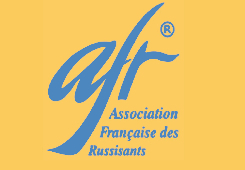
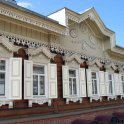
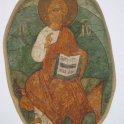

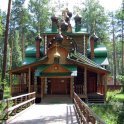
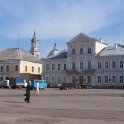

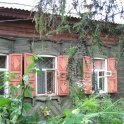
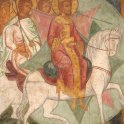
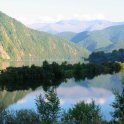
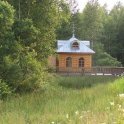
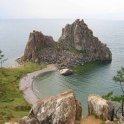
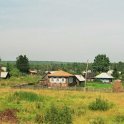
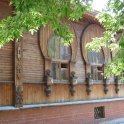
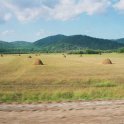
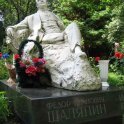
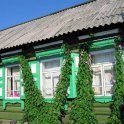
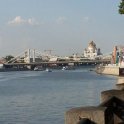
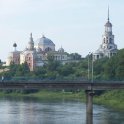
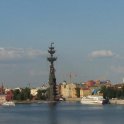

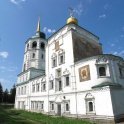
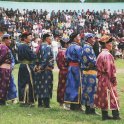

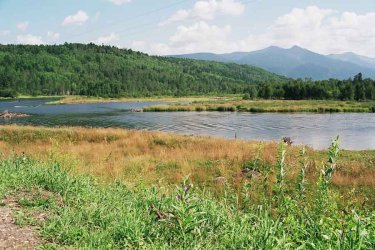
 Sommaire
Sommaire